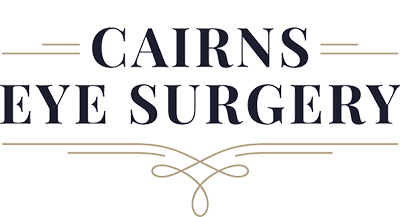Address
Cairns Clinic: 77 Woodward St, Edge Hill
Innisfail Clinic: Innisfail Hospital
Opening Hours
Monday – Thursday: 8am - 5pm
Friday: 8am - 3pm
Saturday-Sunday: Closed
Closed on Public Holidays
For after hours emergencies ring Cairns Hospital on (07) 4226 0000
List of Services
-
Dry EyeList Item 1
People with dry eye syndrome may experience irritated, gritty, scratchy, or burning eyes, excess watering, and blurred vision. The level of discomfort is increased if you wear contact lenses or live in a dry climate. Paying attention to dry eye symptoms is important. If left untreated it may become so severe that it interferes with work and normal life activities.
-
Cataract SurgeryList Item 2
Modern cataract surgery usually involves an incision in the cornea followed by fragmentation of the cloudy lens (cataract) by ultrasound (phacoemulsification) and removal by aspiration. The cataract is broken up with ultrasound, and the pieces are removed under suction.
-
Macula Degeneration TreatmentList Item 3
Early diagnosis and prompt treatment of macular degeneration with Eylea or Lucentis can be potentially sight saving. This is performed at the Cairns Eye Surgery using topical / local anaesthetic to make the procedure as pain free as possible.
-
Minimally Invasive Glaucoma SurgeryList Item 4
MIGS is an acronym for Minimally Invasive Glaucoma Surgery. There are various devices used in minimally invasive glaucoma surgery to lower the intraocular pressure and decrease patients dependence or need to use eye drops for their glaucoma. These include devices designed to bypass the trabecular meshwork such as the iStent,
-
Selective Laser Trabeculoplasty
Selective Laser Trabeculoplasty (SLT) is a simple, yet highly effective laser procedure that reduces intraocular pressure in glaucoma. SLT is a painless procedure. It works by using short pulses of low energy light to target melanin and pigment cells in the trabecular meshwork.
-
Laser Peripheral Iridotomy
Patients having narrow angles inside their eye, can develop raised intraocular pressure and even acute angle closure glaucoma leading to a complete loss of vision. In order to prevent this occurring a laser beam can be used to create small holes in the iris which allow trapped fluid behind the iris an alternative route for drainage and opening of the angles preventing angle closure glaucoma.
-
Trabeculectomy
A trabeculectomy is drainage surgery used in the management of glaucoma.
The term Trabeculectomy refers to making a hole in the drainage area of the eye, to allow fluid from inside the eye to be released, thereby lowering the intraocular pressure.
-
Pterygium Surgery
Pterygium is a fibrovascular growth of tissue that extends from the white part of the eye (the sclera)onto the clear part of the eye (the cornea). Most pterygia grow from the nasal aspect of the cornea.
-
Diabetic Retinopathy Treatment
Panretinal laser photocoagulation is performed in proliferative diabetic retinopathy to prevent severe vitreous haemorrhage and traction retinal detachments. The laser causes regression of the abnormal blood vessels which grow at the back of the eye on the retina in diabetic patients.
-
Yag Laser Capsulotomy
Approximately 20% of patients may develop a film behind the artificial lens implant after cataract surgery causing hazy, decreased vision or glare disability. This condition is called “ posterior capsular opacification”. This condition is not preventable but is very treatable with Yag laser capsulotomy to restore or improve vision.
-
Yag Vitreolysis
Yag Vitreolysis is also called “Floater busting”. It is a non-invasive, pain free procedure that can eliminate the visual disturbance caused by floaters. The goal of vitreolysis is to remove the hindrance caused by floaters. Vitreolysis works by applying nanosecond pulses of laser to evaporate vitreous opacities and cut vitreous strands.
